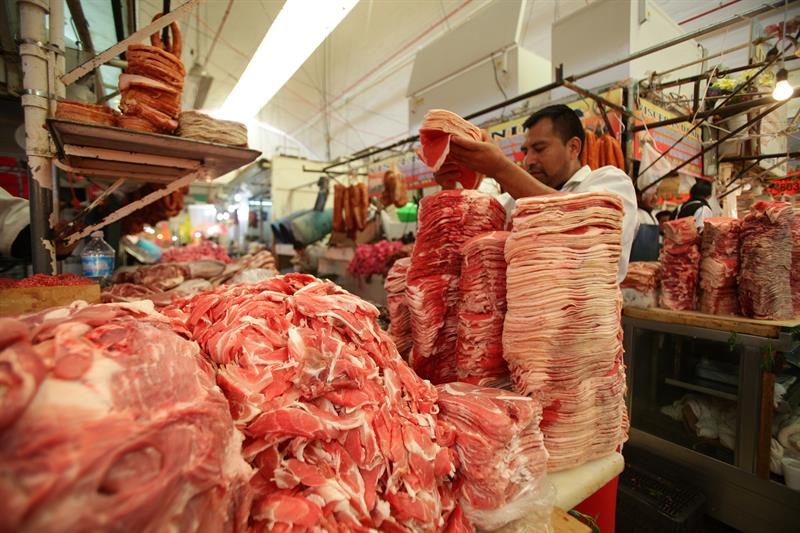Merchandise exports closed 2021 with a record figure close to 3.6 billion dollars, which implies a growth of USD 642.5 million (21.7%) compared to the previous year, which was USD 2,952 million, according to reports issued by the Ministry of Finance and Public Credit (MHCP) and the Association of Producers and Exporters of Nicaragua (APEN).
The price of many export products (such as those sold by Nicaragua) have been rising during the pandemic due, in part, to increased demand from China, the United States and the European Union, in addition to the recovery in activity economy in Latin America.
According to a report by the Economic Commission for Latin America and the Caribbean (ECLAC), cited by the MHCP, the regional entity “projects for Central America, an increase of 24% in the value of exports of goods, driven by the 10% rise of export prices and an expansion of 14% in volume”.
The growth data in value coincides with the appreciations of the president of APEN, Guillermo Jacoby, who points out that “all of Central America experienced similar increases”, with the addition that the Nicaraguan export sector has chained three consecutive record years.
Where there is a serious discrepancy is in the volume, which marks a decrease of 7.7%, because in 2021, the country exported 170 million kilos less than the 2,206 million placed in 2020.
Jacoby explained that this decline is related to the decline in exportable agricultural production, which was reduced when the hurricanes eta Y Iota devastated part of the territory at the end of 2020, limiting the stocks available to place on international markets.
Incessant price growth
The data shows that the average prices of our exports rose 31.9%, and that this was the fundamental reason for the observed growth of 21.7%.
In the case of gold, although the price of this metal, which serves as a refuge value (and also as a raw material in jewelry and technology), only increased by 2.5%, its sales generated revenues of 880.5 million dollars, with which it maintained its throne as the largest individual item in the generation of foreign exchange, and exceeded expectations for last year.
Other products whose prices had notable percentage increases are lobster, (30.6%); beef (17.6%); sugar (14.8%); coffee, (whose prices were depressed, although they rose later), 13.7%, among others.
Jacoby also noted that “if we look at the sectors, livestock, as a whole, represents sales of 1,015 million dollars (28.3% of the total exported), so it continues to be the main generator of foreign exchange in Nicaragua.”
The second place corresponds to agricultural production, with 993 million dollars, representing 27.6% of the income received. With 901.3 million dollars sold, mining ranks third, contributing 25% of export revenues.
Further down are fishery products, with USD 224.8 million (6.3%). The rest of the products contributed USD 459.7 million, or 13% of the total, which “confirms our dependence on commodities,” said Jacoby.
“We are still the same as we were a long time ago: 76.5% of our export earnings are concentrated in ten products,” added the expert.
Concentration risks
By markets, the United States (including Puerto Rico), represents 51% of the value placed in international markets. By region, North America purchased products from us for USD 1,959.1 million; SICA, USD 798 million; Europe, USD 255.9 million; Asia, USD 200.7 million; the rest of the Euro Zone, USD 96.4 million; the Caribbean, USD 89.6 million, and South America, USD 67.3 million.
“82% of our exports are concentrated in ten countries,” explained Jacoby.
Faced with this reality, an economist who spoke with CONFIDENTIAL on condition of anonymity, highlighted the serious threat posed by the possibility that the president of the United States, Joe Biden, apply the Reborn Law, and expel Nicaragua from the Free Trade Agreement between your country, Central America and the Dominican Republic (DR – Cafta, for its acronym in English).
“If exports are limited, that will affect our international trade, and therefore the economy. The fact that a single client buys more than 50% of your exportable production makes you highly vulnerable,” he emphasized.
In the section of exports of products transformed under the free zone regime, the totals placed grew by 743.5 million dollars (36.2%), going from 2054.2 million dollars in 2020, to 2797.8 million in 2021.
In this section, the additional USD 331.5 million in foreign currency obtained from the sale of textiles stand out, whose income grew 28.0%; USD 195.6 million (62.8% more), in harness exports; the USD 36.8 million in which the placement of palm oil in international markets grew, which represented a record growth of 129.6%, and the USD 74.4 million (36.6%), in which tobacco exports grew.

















